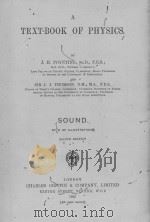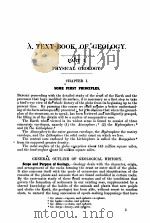《A Text-Book of Neuro-Anatomy》
| 作者 | 编者 |
|---|---|
| 出版 | Lea & Febiger |
| 参考页数 | 478 |
| 出版时间 | 1945(求助前请核对) 目录预览 |
| ISBN号 | 无 — 求助条款 |
| PDF编号 | 812506268(仅供预览,未存储实际文件) |
| 求助格式 | 扫描PDF(若分多册发行,每次仅能受理1册) |
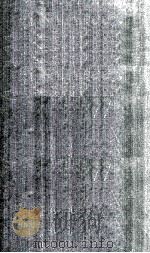
CHAPTER ⅠEVOLUTION AND COMPARATIVE ANATOMY OF THE NERVOUS SYSTEM13
General Considerations13
Functional Factors in Neural Differentiation14
Beginnings of the Nervous System17
The Nervous System of Worms19
The Nervous System of Arthropods21
General Plan of the Vertebrate Nervous System21
The Spinal Cord22
The Brain23
Dogfish23
Other Fishes28
Amphibians28
Reptiles28
Birds31
Mammals32
Comparative Size and Weight of the Brain34
CHAPTER ⅡORIGIN AND DIFFERENTIATION OF THE NEURAL TUBE37
The Neural Tube37
The Neural Crests38
Differentiation in the Neural Tube39
Early Development of the Brain40
Derivatives of the Five Divisions of the Brain41
CHAPTER ⅢTOPOGRAPHY OF THE CENTRAL NERVOUS SYSTEM47
The Spinal Cord47
Form and Relationships47
Longitudinal Furrows48
Nerve Roots51
Funiculi52
The Medulla Oblongata53
Form and Relationships53
Longitudinal Furrows53
Surface Areas53
The Pons56
Form and Relationships56
Anterior Surface57
Posterior Surface57
The Fourth Ventricle57
Form and Relationships57
Fossa Rhomboidea58
The Cerebellum59
Form and Relationships59
The Isthmus60
The Mid-brain61
Lamina Quadrigemina61
Pedunculi Cerebri62
The Fore-brain63
Form and Relationships63
Basis Cerebri63
Pallium63
CHAPTER ⅣTHE CEREBROSPINAL PATHWAY69
The Meninges69
The Dura Mater69
The Arachnoid69
The Pia Mater70
The Cerebrospinal Fluid71
CHAPTER ⅤMORPHOLOGY OF THE NERVE CELLS75
Histogenesis of the Nerve Cells75
The Neuron78
General Morphology78
Axon Sheaths81
Internal Structure82
The Neuron Theory85
The Synapse85
Dynamic Polarization87
Axon Degeneration and Regeneration88
CHAPTER ⅥINTERSTITIAL TISSUE OF THE CENTRAL NERVOUS SYSTEM91
The Neuroglia91
The Microglia93
The Ependyma94
The Functions of the Interstitial Tissue94
CHAPTER ⅦMYELINIZATION97
Myelin97
Morphology of Myelin Sheaths97
Relationships of Neurilemma and Neuroglia Cells to Myelin Sheaths98
Origin of Myelin99
Time and Sequence of Myelinization100
Cerebrospinal Nerves101
Ascending and Descending Fiber Tracts102
Connecting Fibers103
Myelinization and Function103
CHAPTER ⅧNERVOUS INTEGRATION105
Reflex Circuits105
Central Conduction Pathways107
Neuron Patterns109
Receptors110
Definition and Classification110
Morphology111
Neuro-effector Connections115
Motor End-plates116
Visceral Efferent Terminations116
CHAPTER ⅨTHE CEREBROSPINAL NERVES120
Definition120
The Spinal Nerves120
The Cranial Nerves125
Functional Classification of Cerebrospinal Nerve Components126
The Cerebrospinal Ganglia128
CHAPTER ⅩINTERNAL STRUCTURE OF THE SPINAL CORD132
The Constituent Tissues132
Gray Matter134
Topography134
Arrangement of Nerve Cells136
White Matter141
Regional Characteristics of the Spinal Cord142
Spinal Integrating Mechanisms143
Primary Motor Neurons and Their Connections144
CHAPTER ⅪPERIPHERAL AND CENTRAL SPINAL CONDUCTION PATHWAYS148
Spinal Fasciculi148
Intramedullary Courses of the Posterior Root Fibers148
Functional Specificity of Posterior Root Fibers150
Ascending Fiber Tracts152
Proprioceptive152
Exteroceptive154
Fasciculi Proprii158
Descending Fiber Tracts160
Corticospinal Tracts160
Rubrospinal Tracts162
Tectospinal Tracts162
Vestibulospinal Tracts162
Reticulospinal Tracts162
Bulbospinal Tract163
Fiber Tract Degeneration163
CHAPTER ⅫTHE MEDULLA OBLONGATA167
General Morphology167
Constituent Tissues167
Lower Cranial Nerves and Their Central Connections167
Distribution of Gray and White Matter168
The Pyramids and the Corticospinal Decussation171
Intrinsic Structure173
Nucleus Gracilis and Nucleus Cuneatus173
The Medial Lemniscus and Its Decussation173
The Trigeminospinal Tract and the Trigeminal Lemniscus175
The Dorsal Tegmental Tract175
The Arcuate Fibers175
The Olivary Nuclei176
The Restiform Body177
The Reticular Formation178
The Nuclei of the Cranial Nerves180
CHAPTER ⅩⅢTHE PONS185
Tegmental Portion185
Vestibular Nuclei186
Cochlear Nuclei186
The Trapezoid Body and the Lateral Lemniscus187
The Nucleus of the Facial Nerve190
The Nucleus of the Abducens Nerve190
The Superior Olivary Nucleus190
Nuclei of the Trigeminal Nerve191
The Locus Caeruleus192
Other Reticular Nuclei192
The Medial Longitudinal Fasciculus192
The Medial Lemniscus194
The Brachium Conjunctivum194
Basilar Portion195
CHAPTER ⅩⅣTHE MESENCEPHALON198
The Tectum199
Inferior Colliculus199
Superior Colliculus201
The Tegmentum202
Central Gray Stratum203
Minor Tegmental Nuclei204
Brachia Conjunctiva205
Red Nucleus206
Tegmental Decussations207
Substantia Nigra207
Basis Pedunculi208
CHAPTER ⅩⅤLONG CONDUCTION PATHWAYS210
Definition and Classification210
Ascending Conduction Pathways210
Proprioceptive210
Exteroceptive213
Descending Conduction Pathways215
The Corticospinal and Corticobulbar Tracts215
The Rubrospinal Tract217
The Rubrocervical Tract217
The Tectospinal Tracts217
The Vestibulospinal Tract218
The Medial Longitudinal Fasciculus218
The Reticulospinal Tracts220
Sequence of Myelinization220
Ascending Tracts220
Descending Tracts221
Summary of Long Conduction Pathways222
CHAPTER ⅩⅥCENTRAL CONNECTIONS OF THE CRANIAL NERVES CONNECTED WITH THE MEDULLA OBLONGATA,PONS AND MESENCEPHALON225
Functional Classification of Neurons225
Nuclear Columns225
The Somatic Efferent Column225
The Special Visceral Efferent Column226
The General Visceral Efferent Column227
The Visceral Afferent Column228
The General Somatic Afferent Column228
The Special Somatic Afferent Nuclei229
Central Connections of the Cranial Nerves229
The Hypoglossal Nerve229
The Accessory Nerve229
The Vagus and Glossopharyngeal Nerves231
The Acoustic Nerve232
The Facial Nerve235
The Abducens Nerve237
The Trigeminal Nerve238
The Trochlear Nerve240
The Oculomotor Nerve240
Summary of Components,Central Connections and Distribution of Cranial Nerves242
CHAPTER ⅩⅦTHE CEREBELLUM245
Development245
Anatomy247
Topography247
Plan of Organization249
Arrangement of the Gray and White Matter251
Histological Structure of the Cortex252
The Cerebellar Nuclei256
The White Matter258
Cerebellar Peduncles258
Functional Relationships263
Older Theories263
Synergia264
Localization265
CHAPTER ⅩⅧTHE DIENCEPHALON271
Position and Relationships271
The Third Ventricle273
Anatomic Subdivisions274
Epithalamus274
Dorsal Thalamus276
Ventral Thalamus280
Hypothalamus281
Functional Relationships288
CHAPTER ⅩⅨTHE VISUAL APPARATUS295
Retina and Optic Nerve Development295
Structure295
The Optic Tracts and Their Central Connections298
The Optic Radiation300
Projection of the Retina Upon the Cerebral Cortex301
Significance of Partial Optic Decussation303
CHAPTER ⅩⅩTHE AUTONOMIC NERVOUS SYSTEM305
Definition305
Ontogeny306
Structure and Relationships309
Sympathetic Trunks309
Prevertebral Plexuses312
Enteric Plexuses312
Intrinsic Plexuses of Pelvic Organs313
Cephalic Sympathetic Plexuses313
Cephalic Autonomic Ganglia313
Ratio of Preganglionic Neurons to Ganglion Cells314
Central Autonomic Centers and Conduction Pathways314
Spinal Centers314
Autonomic Centers in the Medulla Oblongata and Mesencephalon314
Autonomic Centers in the Diencephalon315
Cortical Connections with Autonomic Centers315
Autonomic Conduction Pathways316
General Physiology317
Functional Significance of Ganglionic Neurons317
Chemical Mediation of Nerve Impulses317
Afferent Neurons Functionally Associated with the Autonomic System318
Antagonistic Action of Sympathetic and Parasympathetic Nerves319
Functional Interrelationships of the Autonomic System and the Endocrine Glands320
Regulation of Autonomic Functions Through Centers in the Brain Stem321
Cortical Regulation of Autonomic Functions322
Summary of the Chief Peripheral Autonomic Conduction Pathways323
CHAPTER ⅩⅪTHE CEREBRAL HEMISPHERES: GENERAL MORPHOLOGY326
Phylogenetio Considerations326
Ontogeny326
Cerebral Evagination326
Rhinencephalon327
Corpus Striatum and Cortex329
The Chorioid Fissure and the Chorioid Plexus332
Hippocampal Formation332
Cerebral Commissures333
Surface Anatomy335
Cerebral Fissures335
Cerebral Lobes338
CHAPTER ⅩⅫTHE OLFACTORY APPARATUS346
Olfactory Epithelium346
Olfactory Nerve347
Olfactory Bulb348
Nervus Terminalis348
The Olfactory Tract349
Hippocampal and Striatal Connections349
Olfactory Reflex Connections351
CHAPTER ⅩⅩⅢTHE CEREBRAL HEMISPHERES: INTERNAL STRUCTURE355
Lateral Ventricles355
Form and Relationships355
Basal Ganglia358
The Caudate Nucleus358
The Lentiform Nucleus358
The Amygdaloid Nucleus360
The External Capsule362
The Claustrum362
Anatomic Relationships363
Striatal Connections366
Functional Relationships369
Projection Fibers370
The Internal Capsule370
Corona Radiata372
Thalamic Radiation372
Cerebral Commissures372
The Hippocampal Commissure372
The Anterior Commissure372
The Corpus Callosum373
Association Fibers374
The Cingulum375
The Uncinate Fasciculus375
The Superior Longitudinal Fasciculus375
The Inferior Longitudinal Fasciculus375
The Occipitofrontal Fasciculus375
CHAPTER ⅩⅩⅣSTRUCTURE OF THE CEREBRAL CORTEX379
General Morphology379
Relationships and Components379
Cortical Neurons379
The Pyramidal Cells379
The Polymorphic Cells379
The Granule Cells380
The Horizontal Cells of Cajal380
The Cells of Martinotti380
Special Cortical Neurons380
Nerve Fibers381
Cortical Layers382
Intracortical Connections385
Cortical Areas388
Cytoarchitectural Types390
Projection Areas394
Efferent Projection Areas395
Afferent Projection Areas398
Association Areas400
CHAPTER ⅩⅩⅤFUNCTIONS OF THE CEREBRAL CORTEX403
Primary Sensory and Motor Functions403
Functional Significance of Cortical Layers404
Are the Higher Cortical Functions Localizable?404
Functional Localization in the Frontal Lobe405
Sensory Localization407
Association Areas408
Aphasia409
Apraxia and Agnosia410
Localization411
Unilateral Cerebral Dominance413
Cortical Reinforcement and Inhibition418
Higher Cortical Functions419
Essential Cortical Differences Between Man and the Lower Animals420
CHAPTER ⅩⅩⅥLABORATORY OUTLINE426
Methods of Study426
Nervous System and Sense Organs of the Dogfish427
The Mammalian Nervous System432
The Fetal Nervous System432
The Adult Nervous System433
General Inspection of the Human Brain435
The Spinal Cord441
The Brain Stem442
Reconstruction of the Chief Conduction Systems446
The Fore-brain447
Clinical Illustrations451
General Neu rological Literature461
1945《A Text-Book of Neuro-Anatomy》由于是年代较久的资料都绝版了,几乎不可能购买到实物。如果大家为了学习确实需要,可向博主求助其电子版PDF文件(由 1945 Lea & Febiger 出版的版本) 。对合法合规的求助,我会当即受理并将下载地址发送给你。
高度相关资料
-
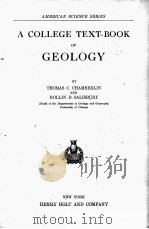
- A COLLEGE TEXT-BOOK OF GEOLOGY
- 1909 HENRY HOLT AND COMPANY
-

- A TEXT-BOOK OF PSYCHOLOGY
- 1923 THE MACMILLAN COMPANY
-
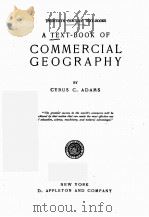
- A TEXT-BOOK OF COMMERCIAL GEOGRAPHY
- 1918 D.APPLETON AND COMPANY
-

- A Text Book of Statistics
- 1988 Pitambar Publishing Company
-
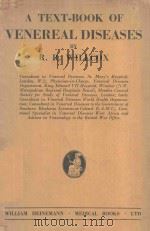
- A TEXT BOOK OF VENEREAL DISEASES
- 1950 WILLIAM HEINEMANN MEDICAL BOOKS LTD
-
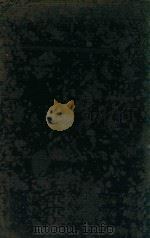
- A TEXT BOOK OF PATHOLOGY
- 1956 HENRY KIMPTON
-

- FUNCTIONAL NEURO ANATOMY
- 1951 HENRY KIMPTON
-

- A TEXT-BOOK OF BACTERIOLOGY
- 1948 GRUNE & STRATTON
-
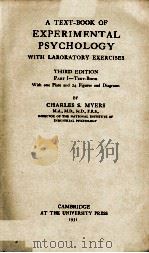
- A TEXT-BOOK OF EXPERIMENTAL PSYCHOLOGY
- 1931 CAMBRIDGE AT THE UNIVERSITY PRESS
-
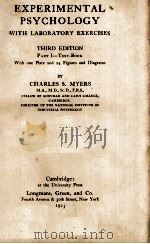
- A TEXT-BOOK OF EXPERIMENTAL PSYCHOLOGY
- 1925 Cambridge:at the University Press
-

- A TEXT-BOOK OF GYMNASTICS
- 1927 WILLIAM HEINEMANN LTD.
-

- A TEXT-BOOK OF SOCIOLOGY
- 1920 THE MACMILLAN COMPANY
-
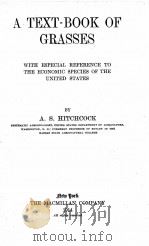
- A TEXT-BOOK OF GRASSES
- 1914 THE MACMILLAN COMPANY
提示:百度云已更名为百度网盘(百度盘),天翼云盘、微盘下载地址……暂未提供。➥ PDF文字可复制化或转WORD
